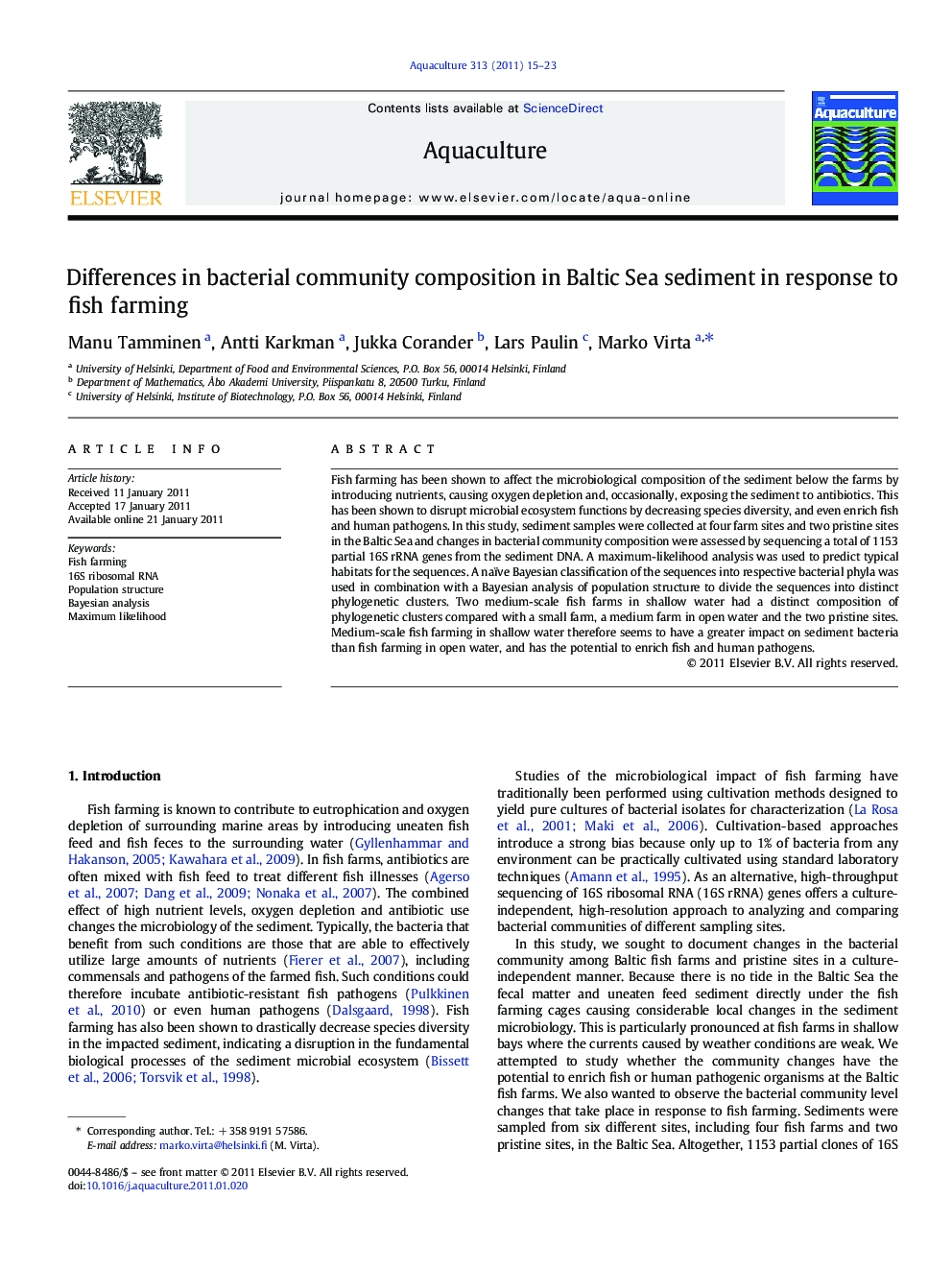| Article ID | Journal | Published Year | Pages | File Type |
|---|---|---|---|---|
| 2423315 | Aquaculture | 2011 | 9 Pages |
Fish farming has been shown to affect the microbiological composition of the sediment below the farms by introducing nutrients, causing oxygen depletion and, occasionally, exposing the sediment to antibiotics. This has been shown to disrupt microbial ecosystem functions by decreasing species diversity, and even enrich fish and human pathogens. In this study, sediment samples were collected at four farm sites and two pristine sites in the Baltic Sea and changes in bacterial community composition were assessed by sequencing a total of 1153 partial 16S rRNA genes from the sediment DNA. A maximum-likelihood analysis was used to predict typical habitats for the sequences. A naïve Bayesian classification of the sequences into respective bacterial phyla was used in combination with a Bayesian analysis of population structure to divide the sequences into distinct phylogenetic clusters. Two medium-scale fish farms in shallow water had a distinct composition of phylogenetic clusters compared with a small farm, a medium farm in open water and the two pristine sites. Medium-scale fish farming in shallow water therefore seems to have a greater impact on sediment bacteria than fish farming in open water, and has the potential to enrich fish and human pathogens.
